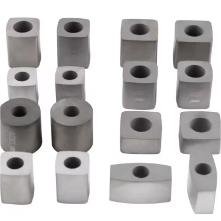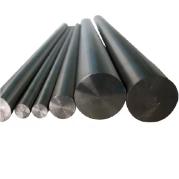**The Great Electroplating Race: Which Metal Takes the Gold?**
(Which Metal Will Be Plated First In Electrolysis)
Imagine a tiny, invisible race happening inside a liquid-filled tank. Two metals are competing to coat a piece of jewelry or a car part. This race isn’t about speed. It’s about chemistry. Welcome to electrolysis—the process where metals duke it out to plate an object first. Let’s break down who wins this showdown and why.
Electroplating works like this. You dunk two metal rods (electrodes) into a solution full of charged metal particles (ions). Hook them up to a battery, and the magic starts. The battery pushes electrons into one electrode, making it negative. The other electrode becomes positive. Metal ions in the solution get pulled toward the negative electrode. When they arrive, they grab electrons, turn back into solid metal, and stick to the surface. That’s electroplating in a nutshell.
But which metal gets plated first? Let’s say your solution has copper ions and silver ions. Both want to coat the negative electrode. Who wins? The answer lies in their “eagerness” to grab electrons. Scientists call this “standard reduction potential.” Think of it like a leaderboard. Metals higher on this list are more desperate to gain electrons. Silver, for example, sits higher than copper. If both are in the solution, silver ions will rush to the electrode faster. They’re hungrier.
But wait. Real life isn’t that simple. What if there’s way more copper ions than silver ions? Even if silver is naturally hungrier, a crowd of copper ions might swarm the electrode first. Concentration matters. Imagine a race where one runner is faster, but another has a huge head start. The underdog might win.
Here’s another twist. Some metals are shy. Even if they’re high on the leaderboard, they need extra push (voltage) to start reacting. This is called “overpotential.” Take hydrogen, for example. On paper, it should plate easily. But in reality, you often need more voltage to make it happen. This can change the race entirely.
Let’s tie this together. Say you’re plating a fork using a solution with nickel and zinc. Nickel has a higher reduction potential. It should plate first. But if the zinc ions are way more concentrated, zinc might coat the fork before nickel gets a chance. Or maybe the voltage isn’t enough to overcome nickel’s overpotential. Suddenly, zinc steals the spotlight.
Real-world electroplating juggles all these factors. Engineers pick metals and tweak conditions to get the result they want. Want a thick, shiny layer of gold? Crank up the concentration of gold ions. Need a rust-proof coating of zinc on steel? Adjust the voltage to favor zinc’s plating.
One last thing. The object being plated matters too. If it’s already made of a metal higher on the leaderboard, ions from the solution might not stick. Ever wonder why you don’t see iron plated with copper unless the copper solution is super concentrated? Iron’s low reduction potential makes it hard for copper to bond without help.
(Which Metal Will Be Plated First In Electrolysis)
So next time you see a chrome-plated motorcycle or a gold-plated watch, remember the invisible race behind it. Metals battling for electrons, concentration playing referee, and voltage shouting from the sidelines. It’s not magic—it’s chemistry in action.
Inquiry us
if you want to want to know more, please feel free to contact us. (nanotrun@yahoo.com)


